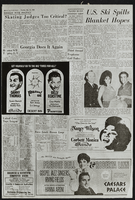Search the Special Collections and Archives Portal
Search Results
Erma Cunningham Collection on the Eldorado School District, Nelson, Nevada
Identifier
Abstract
The Erma Cunningham Collection on the Eldorado School District, Nelson, Nevada is comprised of materials related to the elementary school that was located in Nelson, Clark County, Nevada from 1941 through 1952. It includes attendance records, student grades, and assorted materials related to education.
Archival Collection
Charles Kielhofer Letter
Identifier
Abstract
The Charles Kielhofer Letter collection consists of a single photocopy of a letter written by Charles Kielhofer on January 31, 1958 to the Las Vegas, Nevada Review-Journal newspaper to inform them that they credited the wrong person with the establishment of Bullfrog Mine in one of their articles.
Archival Collection
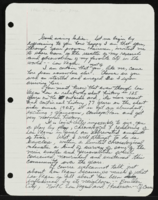
Handwritten speech by Roosevelt Fitzgerald about a brief history of Las Vegas, Nevada
Date
Archival Collection
Description
From the Roosevelt Fitzgerald Professional Papers (MS-01082) -- Unpublished manuscripts file. For an unknown event.
Text
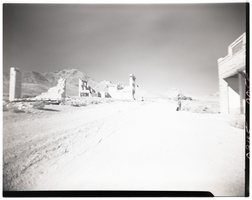
Film transparency of a boy looking at an abandonded building, Rhyolite, Nevada, November 25, 1948
Date
Archival Collection
Description
Image
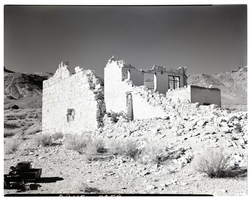
Film transparency of the ruins of possibly the John T. Overbury building, Rhyolite, Nevada, November 25, 1948
Date
Archival Collection
Description
Image
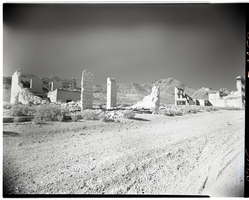
Film transparency of buildings located on Golden Street, Rhyolite, Nevada, November 25, 1948
Date
Archival Collection
Description
Image
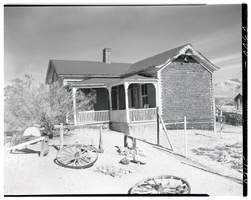
Film transparency of the famous Tom Kelly Bottle House in Rhyolite, Nevada, November 25, 1948
Date
Archival Collection
Description
Image
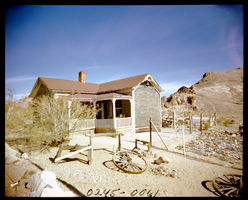
Film transparency of the famous Tom Kelly Bottle House in Rhyolite, Nevada, November 25, 1948
Date
Archival Collection
Description
Image

Film transparency of Mr. L. J. (Lewis J.) Murphy and the famous Tom Kelly Bottle House in Rhyolite, Nevada, November 25, 1948
Date
Archival Collection
Description
Image

